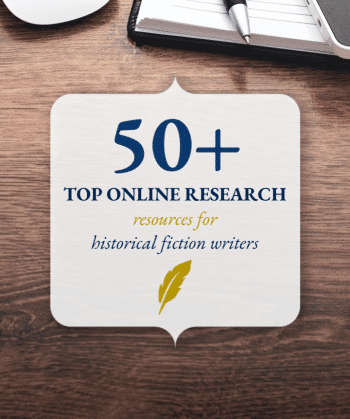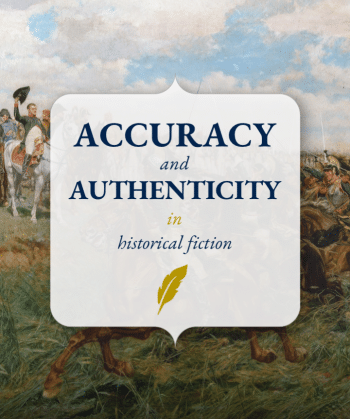How can historical fiction authors ensure their writing truly reflects the reality of their chosen period?
So much research goes into writing a historical novel: digging into the archives, consulting experts, site visits and fact-checking, all to make sure a book is historically accurate and feels authentic to readers.
How do authors apply this meticulous approach to building characters, especially if their own life experience is very different to the people they are writing about? What if an author is keen to include marginalised characters but unsure how to go about this respectfully?
Here are some useful points to bear in mind when writing outside your own experience. In many cases there are no definitive answers, only questions that demand your consideration.
1. Consider your position
Think about your own relationship to your characters. What are the power dynamics? Are you writing about people from a country that was colonized by your own people? Are you from a majority group, writing about a minority? How can you make sure you approach this in a way that isn’t exploitative?
This is not about causing ‘offence’ but avoiding language and themes that perpetuate actively harmful stereotypes or falsehoods. This Holocaust Museum article about John Boyne’s The Boy in the Striped Pyjamas is an example of how historical fiction – even when written with good intentions – can cause harm.
This extends beyond the page to how power dynamics play out in the publishing world. For example, look at the disparities in how white authors are treated by publishers compared to authors of colour.
There’s also a difference between including a diverse list of minor or secondary characters and writing a protagonist whose experience is very different from your own. If this is your main character, it is worth doing some deep thinking about why you want to do this, how you plan to approach the writing process, and indeed whether you can do justice to this story at all. A number of writers have written very helpful articles on this subject, including Kit de Waal and Jeanette Ng.
50+ top online research resources for historical fiction writers

2. Challenge your assumptions
Beware of writing clichés when you’re describing marginalised characters, and challenge your own assumptions about what role they might have played in society. There are numerous resources and writing courses out there that will help you avoid some of the most common pitfalls (male authors writing weirdly about their female characters’ breasts, white authors comparing PoC characters’ skin to different types of food, abled writers portraying disabled people as evil).
3. Do the work
The archives can provide tangible evidence of people whose existence has been erased from history books. For example, Switching the Lens offer a searchable dataset containing records of over 2600 Londoners of African, Caribbean, Asian and Indigenous heritage, going back to the 16th century.
Referring to primary sources will also help you build more rounded and realistic characters. The archives show that Black people in Tudor England worked as silkweavers, divers, carpenters – not slaves. Women ran their own businesses.
Also consider what kind of authors you read. Are your bookshelves full of white writers or male writers? If your only historical fiction or non-fiction reading is by authors from majority groups, invest in writing beyond your usual scope. It will give you a new perspective on history and the chance to discover some fantastic writers.
Look beyond the page, too. Sources can’t always tell you how a character would feel. This is where your imagination is supposed to come in but if you’re writing about someone whose experience is vastly different to your own, imagination may not be enough. If you would consult an expert about medieval warfare to ensure your book is historically accurate, the same applies to a character’s lived experience, especially if they play a significant role in the book.
Again, if you are asking a marginalised person about their life for research, or if they’re reading through a draft and giving feedback, think about how you can ensure this exchange is not exploitative. Can you offer payment for their time – or, if they don’t want paying, can you make a donation to or fundraise for a charity of their choice? Can you find ways to promote their cause and make space for people from that community in your field of work?
How can you translate their guidance into writing that honours their experience without claiming ownership of it – and will you be willing to listen if it turns out you’ve got something wrong?
Accuracy and authenticity in historical fiction

4. Watch your language
You may also need to think about whether to use language that was in common use in the past but that is ie. racist or homophobic. Is there a real need to include it? Is it being used in dialogue by a character that the reader needs to understand is a bigot, or is it appearing in the narrative without real justification? What is the purpose behind its use? These are questions to consider while writing, and something that could be checked by a sensitivity reader during the editing process.
Professional sensitivity readers are experts in their field, which is their lived experience. You or your publisher might pay a sensitivity reader to check your manuscript for errors, stereotypes, harmful language and wider thematic issues. The poet Jay Hulme has an excellent thread here about how sensitivity readers differ from friends or other experts who read or fact-check your manuscript.
5. Learn to live with uncertainty
No one is going to definitively be able to tell you that what you have written is OK. A sensitivity reader’s opinion is still just one opinion – they can’t speak for a whole community. What is acceptable to one person may be unacceptable for someone else. Nor are sensitivity reads a sticking plaster for serious issues with the text, which is why it’s important to do the work right from the beginning.
This may all seem like a lot to think about, but taking time to really reflect on what you are writing and why will benefit you in the long run. It may stop you spending time on a story that won’t work, or it may enrich and deepen your writing and your readers’ understanding of history.
Kate Morrison is a guest contributor to The History Quill. Her debut novel A Book of Secrets was published by Jacaranda Books in 2019. It tells the story of a girl from 16th century Ghana searching for her lost brother through an Elizabethan underworld of spies, plots and secret Catholic printing presses. It was longlisted for the HWA Debut Crown Award and the Diverse Book Awards 2019. Find out more about Kate via her website or Twitter @katecmorrison.
Do you write historical fiction?
Join our email list for regular writing tips, resources, and promotions.

